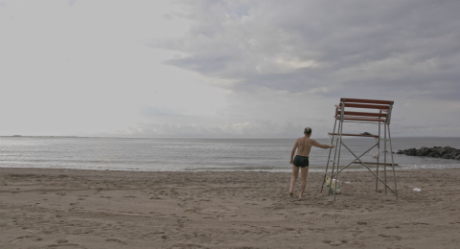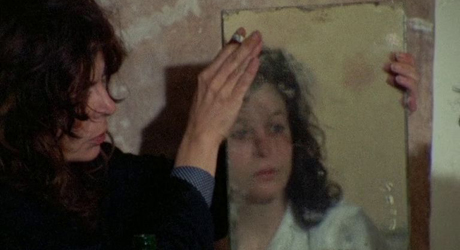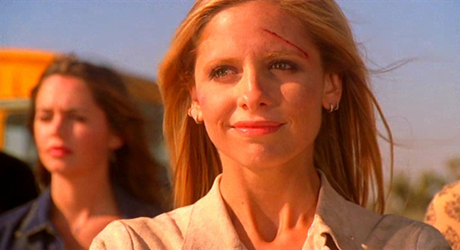
“The Sick Woman is the starving.
The Sick Woman is the dying.
And, crucially: The Sick Woman is who capitalism needs to perpetuate itself.
Why?
Because to stay alive, capitalism cannot be responsible for our care – its logic of exploitation requires that some of us die.”
~ Johanna Hedva, “Sick Woman Theory,” Mask Magazine
During the second season of the TV adaptation of Margaret Atwood’s The Handmaid’s Tale, a trend emerged among mostly-female culture writers. While they were careful to acknowledge the show’s overall quality and relevance as a depiction of a world in which women’s rights have been violently curtailed, they couldn’t quite shake the discomfort of actually watching it. Writing for Salon,1 TV critic Melanie McFarland praised the powerful episode “Holly” while at the same time reflecting on her hesitation to actually recommend it: “…current events — actual real world happenings — are inching toward meeting up with early days of the dystopian nightmare that is [the series’ fictional world] Gilead much more than a woman like me is comfortable with.” Many critics of colour would equally point out that the show was not just getting too close to current events, but mirroring the real-life situations faced by BIWOC around the world. Vulture critic Angelica Jade Bastien rightly pointed out the show’s shortcomings in grappling with the experience of people of colour, as the fictional setting of the show “isn’t a possible horrifying future, but the reality of what America has always been.”2
Regardless of the accuracy of The Handmaid’s Tale’s interpretation of our current systems of oppression, the sentiment remains: if our imagined dark futures now hew too close to some kind of reality, then we’ve perhaps reached the creative limit of what dystopian science fiction can tell us about the worst parts of ourselves. With the convergence of multiple potentially world-ending phenomena — climate crises, the rise of white supremacy, ongoing threats against women’s bodily autonomy, fascism, nationalism, racist immigration policies, and the increasing divide between economic classes — maybe our already dystopian present is better served by documentary. Our compromised ability to envision any kind of foreseeable “future” is the concern of Brett Story’s documentary The Hottest August (2019). Working much in the same mode as Jean Rouch and Edgar Morin’s 1961 ethnographic Chronicle of a Summer (in which the filmmakers asked citizens in Paris, “Are you happy?”), Story turns her camera on New York City in August 2017 asking her subjects some variation on “How do you feel about the future?” Using a similar “associative structure”3 as she did in The Prison in Twelve Landscapes (2016), Story combines these encounters with talking-head interviews with economists, artists, social workers, and others who are professionally invested in thinking through the future.
…if our imagined dark futures now hew too close to some kind of reality, then we’ve perhaps reached the creative limit of what dystopian science fiction can tell us about the worst parts of ourselves.
The looseness of Story’s approach has been commented upon by some critics as undermining any sort of underlying message; that for all the specificity of the film’s time and place, it is lacking in any sort of clear context.4 However, Story’s seemingly free-form structure belies the rigorous thought and discourse she uses to articulate our current liminal state of urgency and stagnation. While the usual tropes of documentary context are missing (there is no onscreen text telling us who the subjects are, nor where we are in the city at any given time), there are contextual frameworks at play.
There’s an unsettling in-betweenness baked into The Hottest August’s design. Though it is explicitly about trying to peer into the future from the present, it is (at the time of writing in 2019) already two years removed from its original referent — the present is already past. At the time, the country was nearly six months into the Trump administration, yet Trump and his ilk only exist within the film as spectre, referenced in vague terms, as by the recent college graduate lamenting her decision to get a degree in Physical and Environmental Geography (“…right now is a really bad time to get an environmental job because the EPA had to be downsized […] for reasons. Political reasons.”), or a young mother tearfully explaining her decision to attend an assertiveness workshop because she witnessed a hate crime “around the election.” Other instances place national current events fully in the background of the day-to-day life depicted in the film — a news broadcast reporting on the death of Heather Heyer at a white nationalist rally in Charlottesville, Virginia plays on a TV in a nearly empty laundromat. Shrewdly, this decentring of the Trump administration redefines its influence as a symptom of a larger social sickness rather than the cause.
There’s an unsettling in-betweenness baked into The Hottest August’s design. Though itis explicitly about trying to peer into the future from the present, it is (at the time of writing in 2019) already two years removed from its original referent — the present is already past.
Along with explicitly declaring the physical and temporal boundaries of the project as taking place in New York in August of 2017, there are clues laid out by Story to situate the time and place within a specific historical context. Tying together this series of character vignettes and sketches are voiceover reading excerpts (by Canadian actress Clare Coulter) from three selected works by Zadie Smith, Karl Marx and Annie Dillard. Accompanied by lush, hazy images of New York in the summer, each of these readings gestures towards different thematic anxieties articulated by the subjects of The Hottest August. None of these readings are identified as such — the work of picking out Marx from Dillard, etc., is left up to the viewer. It’s not difficult to glean Story’s ideological point of view when stacking Capital (“To the out-cry as to the physical and mental degradation, the premature death, the torture of over-work, it answers: Ought these to trouble us since they increase our profits?”) against an interview with an economist who chillingly insists that capitalism should not only be upheld but that “ownership of assets needs to be expanded” to the point that “we need to own clean air.”

As observed by Chelsea Phillips-Carr in her write-up of the film upon its presentation in Toronto at the Hot Docs film festival, The Hottest August is a rare climate crisis film that focuses on lived experiences rather than bolstering a dire prognosis with quantitative data.5 The closest it comes to gesturing towards that approach is during an interview with homeowners who bore some of the worst flooding during Hurricane Sandy. A middle-aged woman waves off Sandy as a once-in-a-lifetime freak occurrence, with no correlation to climate change: “That’s Al Gore. He’s making tons of money on all of that.” For her, the high-minded slickness and success of Gore’s PowerPoint-powered An Inconvenient Truth (Davis Guggenheim, 2006) is enough of an indictment so as to render any facts it presents as somehow unreliable. Instead, Story’s engagement with climate change is more poetic and elemental. Each of the selected readings chosen for the film’s voiceover makes reference to some kind of catastrophic world-ending event. From Smith’s Elegy for a Country’s Seasons, a flood (“It’s the new normal as a beloved pear tree, half-drowned, loses its grip on the earth and falls over”), Marx’s cry of “Après moi le déluge! [After me, the flood]” and from Dillard, a haunting account from Total Eclipse (“The second before the sun went out we saw a wall of dark shadow come speeding at us…Hauling darkness like plague behind it.”).
To conceive of a future beyond our current moment requires more imagination than the predictions laid out by the likes of The Handmaid’s Tale or the cyber pearl-clutching of Black Mirror, in which anxieties about the advancement of technology never amount to anything more compelling than “What if your mate was a TV?”6 or “What if phones, but too much?”7 Such visions only follow the logic of a world that continues to live within current systems of oppression rather than attempt to conceive of a world outside those systems. It’s a dynamic that writer and artist Johanna Hedva identifies in her “Sick Woman Theory” for Mask Magazine, that the world itself, “particularly our current regime of neoliberal, white-supremacist, imperial-capitalist, cis-hetero-patriarchy” is what is in fact “making and keeping us sick.”8

Is there a possibility for a world that doesn’t make us sick? The Hottest August can’t offer much in the way of solid solutions, but it does make space for possibilities. In one segment, a proponent of “robot communism” makes the case to Story about the likelihood of a fully automated future that “can pave a way towards a society that has more social programs within it.” In another, an Afro-futurist performance artist explains his “Afronaut” character as a figure from the future who fixes problems in the past and in turn hopes to inspire those in the present to fix their immediate social concerns. The strongest case The Hottest August makes is for the importance of being able to imagine a future at all. As one interview subject puts it, “Being able to dream about yourself in the future means being able to make plans to change that future.” Unfortunately, we’ve been living, as observed in the final moments of the film, through “more habits than dreams”— too complacent and existentially exhausted to be able to break free of the stagnant blaze of our hottest Augusts.





